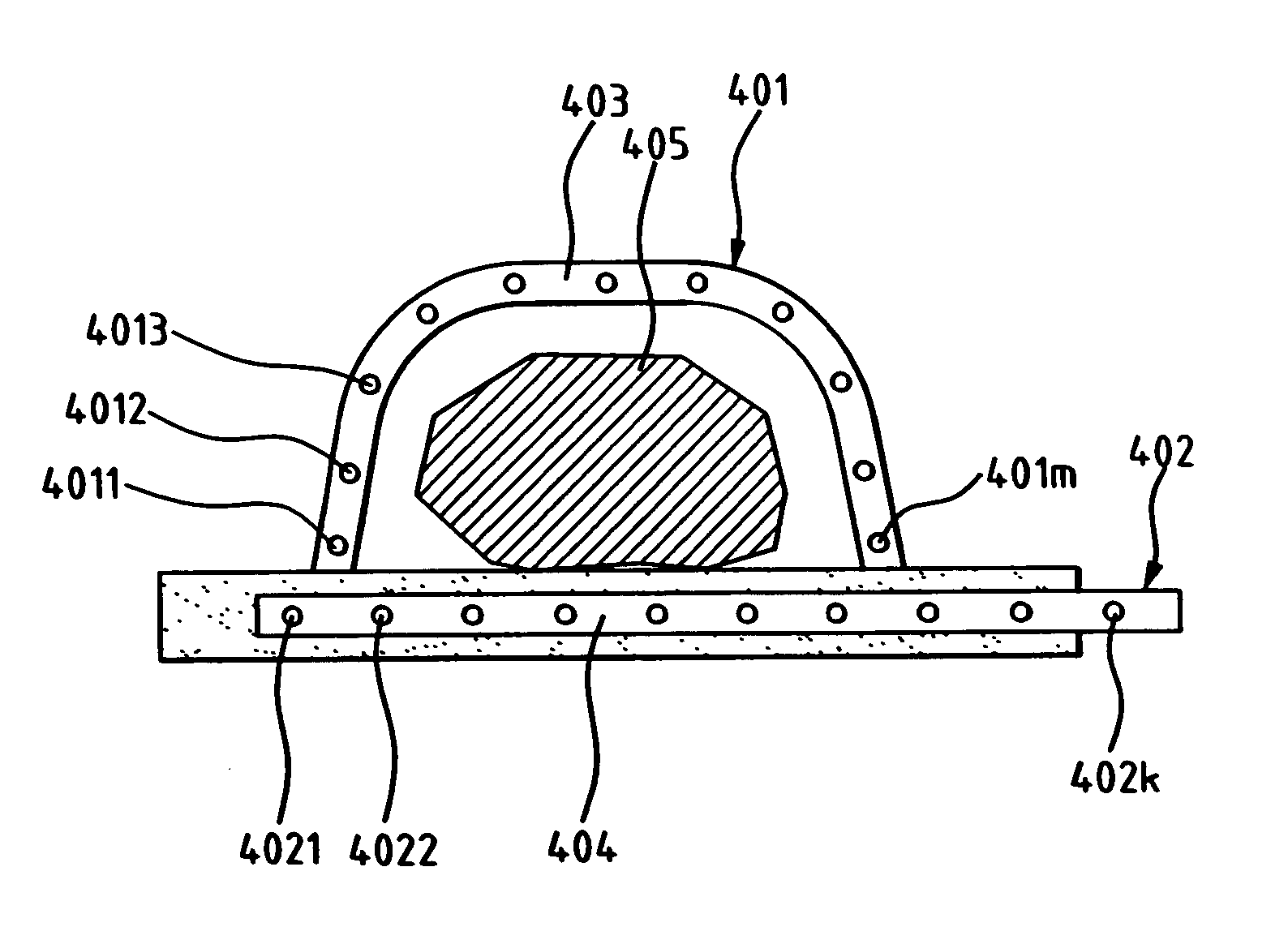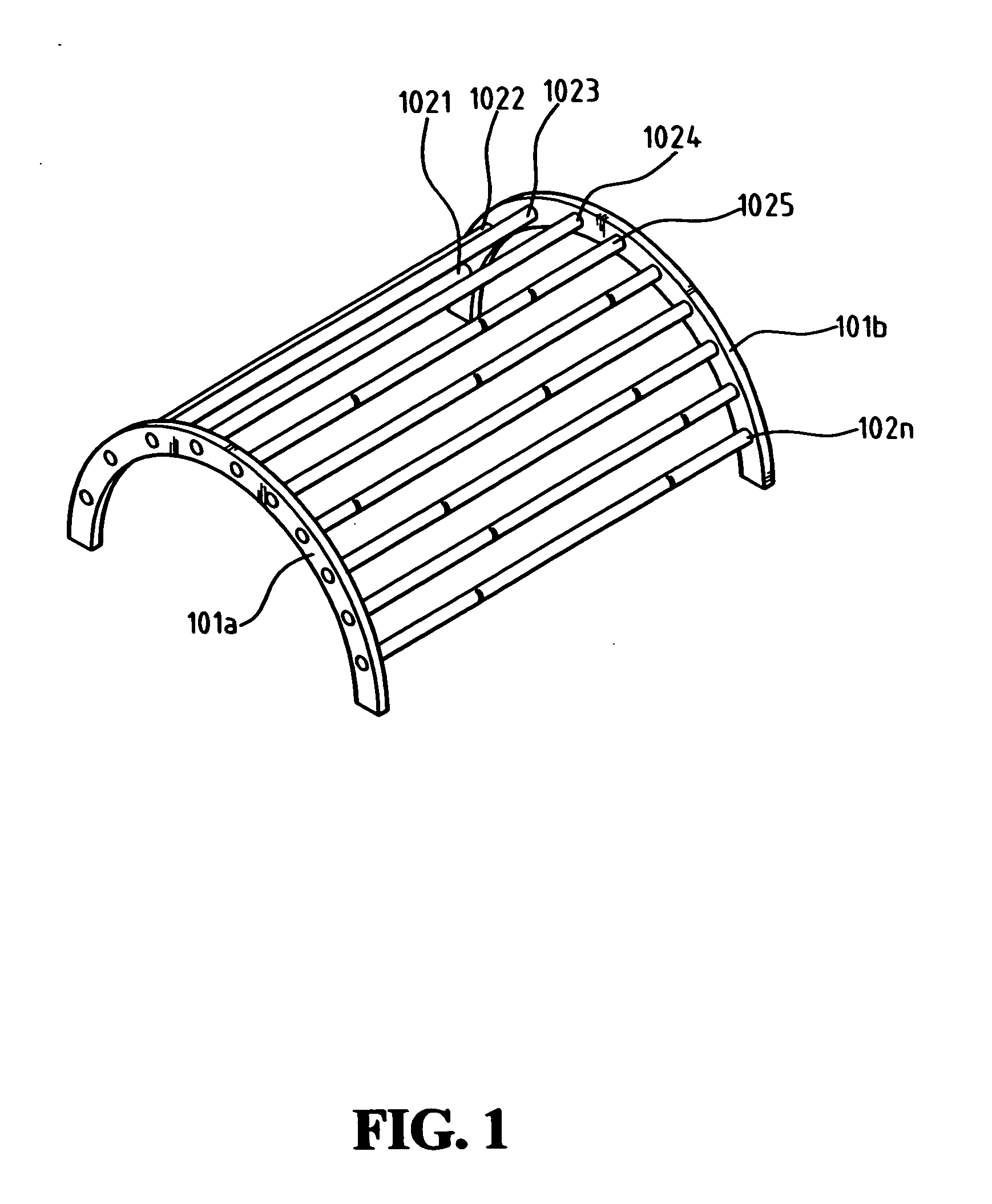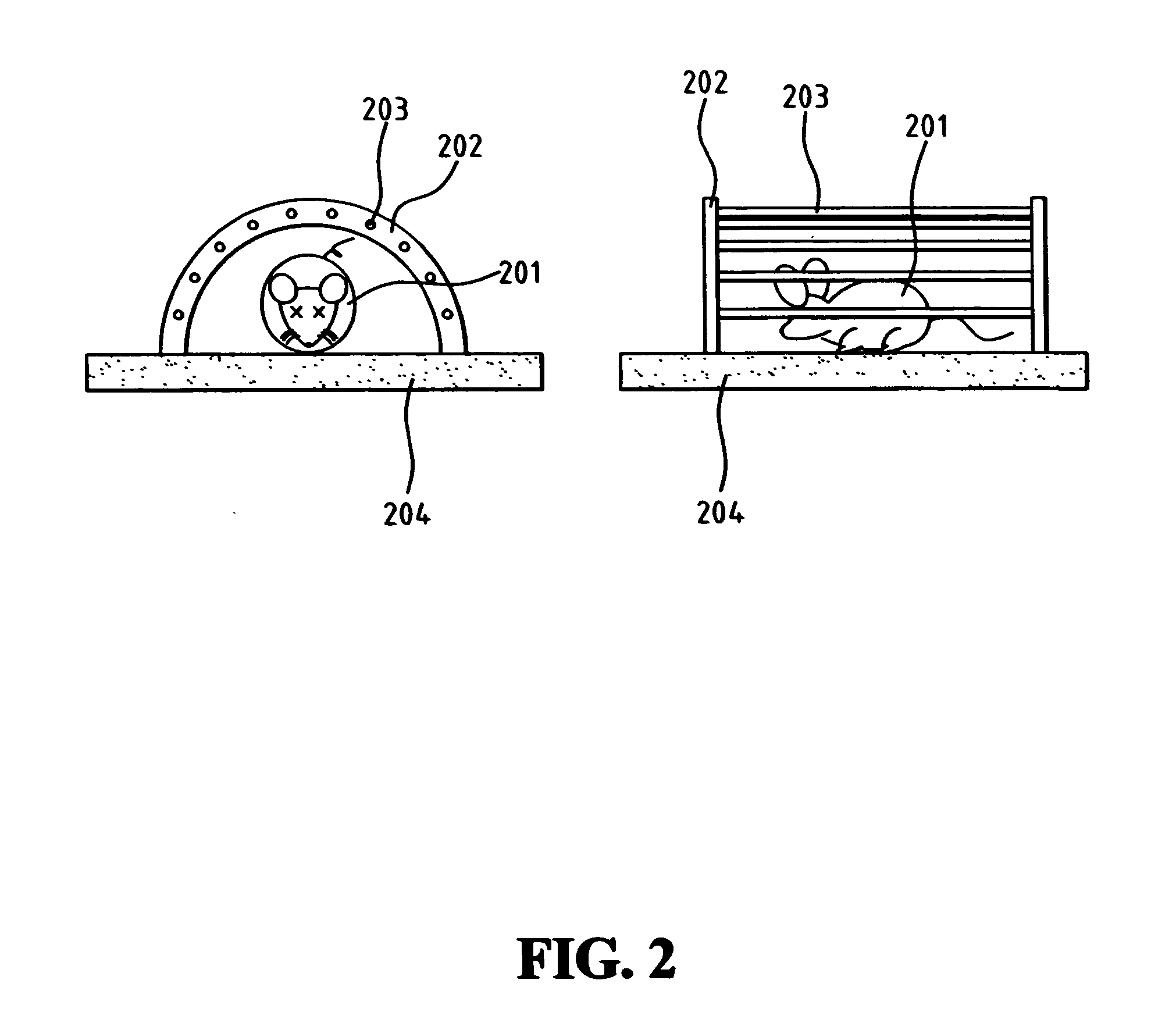Scatter correction device for radiative tomographic scanner
a radiation correction and scanner technology, applied in the field of radiation tomographic scanner apparatus and method, can solve the problems of reducing system spatial resolution, ignoring source location, and difficult to correct scattered radiation in pet, so as to improve the accuracy of experimental results, improve contrast, and improve the effect of accuracy
- Summary
- Abstract
- Description
- Claims
- Application Information
AI Technical Summary
Benefits of technology
Problems solved by technology
Method used
Image
Examples
Embodiment Construction
FIG. 1 illustrates a scatter correction device according to the present invention. Referring to FIG. 1, the scatter correction device is mainly formed with one or more beam stoppers 1021, 1022, 1023, 1024, 1025, . . . , 102n, and one or more steady support components 101a and 101b. Each beam stopper has a thickness from the range of 2 mm to 5 mm, and the two ends fixed on the steady support components respectively. With such ends, these beam stoppers can be sustained at fixed locations by the steady support components.
The use of the beam stoppers is used to block radiation efficiently. Because high Z materials have great blocking ability, the beam stoppers of the invention can be thin sticks made of high Z materials, as shown in FIG. 1. The high Z materials may include lead and wolfram. According to the experimental results, the beam stoppers with thickness equal to 3 mm can block radiation most efficiently. When the scatter correction device is applied to a SPECT, due to the lower...
PUM
 Login to View More
Login to View More Abstract
Description
Claims
Application Information
 Login to View More
Login to View More - R&D
- Intellectual Property
- Life Sciences
- Materials
- Tech Scout
- Unparalleled Data Quality
- Higher Quality Content
- 60% Fewer Hallucinations
Browse by: Latest US Patents, China's latest patents, Technical Efficacy Thesaurus, Application Domain, Technology Topic, Popular Technical Reports.
© 2025 PatSnap. All rights reserved.Legal|Privacy policy|Modern Slavery Act Transparency Statement|Sitemap|About US| Contact US: help@patsnap.com



